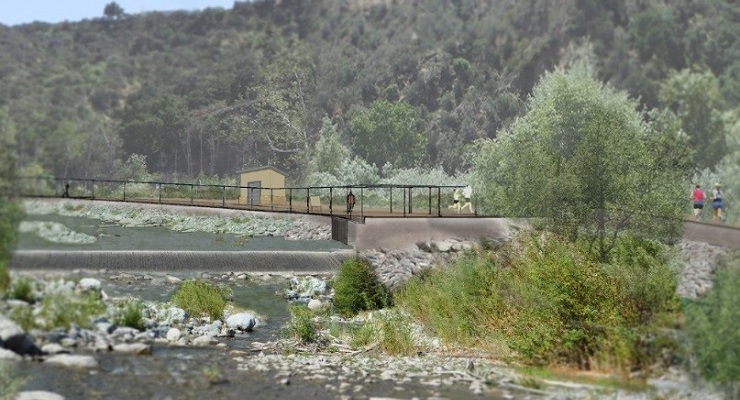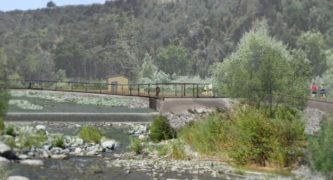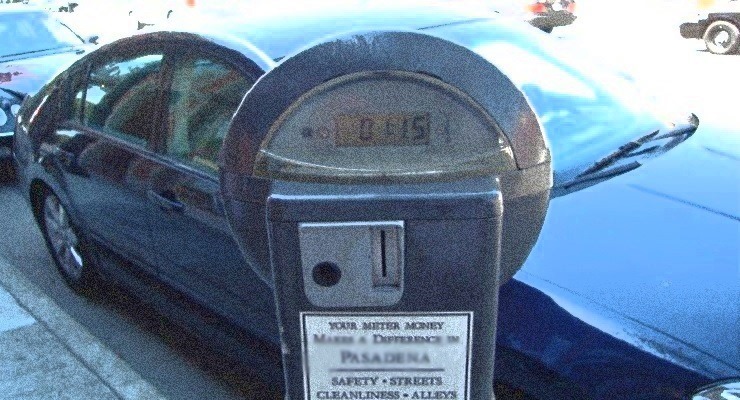
Over the years, Pasadena residents have ramped up their understanding that we are in a fossil fuel-induced global heating emergency. The relentless global carbon loading of the atmosphere has stoked the mega-drought that now encompasses the American West. In addition to bracing for heat waves, elevated fire danger, air quality alerts, and the possibility of blackouts, residents are also increasingly concerned about the possibility that Pasadena may soon face a severe water shortage, brought on in large part by global heating.
Pasadena is facing a summer of cutbacks due to low snowpack in the Sierras that has reduced the allocation of flow down the State Water Project. Reservoirs that provide water to Pasadena are at very low levels. Arizona Central recently reported that since 2000, the water level in the Lake Mead, which is the largest in the country, has dropped about 140 feet. The lake is now just 37% full, headed for a first-ever official shortage and sinking toward its lowest levels since it was filled. The latest projections show that by the end of 2021, Lake Mead will decline below an elevation of 1,066 feet, far below the threshold — 1,075 feet — for the federal government to declare a shortage. That is expected to happen in August, triggering the largest water cuts to date next year for Arizona, Nevada and Mexico. Even larger cutbacks could come in 2023 if the reservoir continues to decline as projected over the next year into a more severe “Tier 2” shortage. Lake Mead’s downward spiral is being driven largely by the dire situation upstream at Lake Powell, which has declined to 34% of full capacity. It is during this period of drought, when a conservation budget rate is so needed, that PWP is asking the Council to approve a project that makes no environmental or economic sense.
Water efficiency and conservation are widely recognized to be the most advantageous ways to protect communities from the worst consequences of a drought. Notwithstanding these realities, it appears at this time, that Pasadena Water and Power (PWP) has its focus on defending a costly, minimal pay back idea – the Arroyo Seco Canyon Project (ASCP).
PWP may have already spent approximately $6 million on staff and consultants planning the project. The project was created in 1995, and was first funded in 2001. The idea is to divert stream water to new settling basins to percolate water measured by the Raymond Basin Management Board so Pasadena could receive credits to pump water that would have otherwise stayed in the stream. Of note, the management board has not pre-approved the project or the available pumping credits. The Raymond groundwater basin stretches on the north along the foothills from LaCanada Flintridge to Arcadia and to the south, roughly to South Pasadena and Huntington Gardens.
This Monday, the Pasadena City Council has the opportunity to adjust water policy and discontinue support for the ASCP. The Council is urged to chart an actual plan to help arrest the century-long constant drawdown of the Raymond Basin, primarily through aggressive efficiency and conservation policies. The Council should reject the ASCP, ending City policy support for an ill-conceived $14 million project. Our elected leaders can select from environmental or economic factors to describe why they prefer a cost-free option to avoid an expensive, outdated idea that would divert only a trivial amount of water. If the stream were allowed to flow, it would percolate into the basin, at an amount roughly equal to what the ASCP envisions.
The Arroyo Seco Foundation has gathered over 1000 signatures on a petition from residents. Hundreds have offered a wide range of common sense reasons why the Council should reject the ASCP, primarily over environmental, hydrologic, and reliability concerns.
Is there a financial case for the ASCP? The answer is no.
To help put the $14 million project into perspective, PWP receives $63 million in annual water revenues from ratepayers. About a third of that revenue is used to pay for water.
PWP supplies about 30,000 acre feet of water per year to customers. (An acre foot of water would flood a football field 1-foot deep).
About two-thirds of Pasadena’s water (approximately 20,000 acre feet) is purchased from the City’s sole regional wholesale treated water supplier – the Metropolitan Water District (MWD) of Southern California – at a cost of approximately $1,000 per acre foot, totaling about $20 million.
By contrast, about one-third of our water (approximately 10,000 acre feet per year) is drawn from the Raymond Basin. The water is “free.” The cost that PWP pays is for the energy and maintenance to pump and treat, at anywhere between $200-500 per acre foot, totaling between $2 million and $5 million a year.
Ignoring their own earlier hydrologic studies, PWP has been attempting to sell the ASCP, arguing that diverting water from the Arroyo Seco would gain pumping credits of about 800 acre feet per year from the Raymond Basin Management Board – that has not given them a green light. As a comparison, the largest single consumer of water in Pasadena – the Brookside Golf Course demand is estimated to be about 850 acre feet per year. Pasadena has been informed that water expenses at the golf course continues to rise and concerns have been raised that reliance on potable water in the long term is in question.
PWP has centered on the idea that pumping water that they divert from the stream will yield a possible net financial benefit to ratepayers. PWP suggests that the Council should authorize continuation of a project that would plan on spending an additional $7 million over the next five years. They position the ASCP as a financial move, pointing to pumped water at $200-$500 per acre foot compared to MWD water at $1000 per acre foot. Because the difference is so tiny, PWP has not offered the Council an estimate of what the actual impact of the difference in water cost would be on rates. This has not been offered, because at best, the project would only supply about 2.5 percent of PWP’s total annual water, and damage the Arroyo Seco natural stream and percolation in the process.
Depending on which of two PWP-stated cost figures is correct ($200 per acre foot, or $500 per acre foot) for pumping water from the Raymond Basin, it would take somewhere between 21 and 33 years for a payback resulting from PWP paying less for pumping water, rather than paying MWD for an equal amount of water. The first year’s pay back would be about $500,000 – only about 1.5% of the annual cost that PWP currently pays to procure water.
Council is reminded that when they review an environmental impact report, like the EIR for the ASCP, the report is not designed to evaluate whether projects are financially feasible. That is the job of the City Council to determine, and why this information has been produced for their review.
A small fraction of the project’s money could hire a team of the brightest and best minds to develop a progressive water budget and conservation pricing structure that would yield water savings an order of magnitude more than the ASCP, which would help address the basin’s declining health.
The City Council needs to directly address the folly of continuing to spend money on the ASCP. A far better use of that money would be to actively engage the public in a process to design a budget and conservation based pricing structure for water. A few years ago, PWP declined to proceed with budget pricing because the City lacked a capable computer information and billing system. Now is the time to design a smart water pricing structure, so the City can timely deploy a new pricing structure that uses its new high capability $20 million computer system. This will be a big step forward to start saving water at an order of magnitude greater than what the ASCP could yield.
At their meeting this Monday afternoon, June 7, the City Council should direct PWP to abandon the ASCP once and for all, and redirect that money towards conservation and efficiency, including early utilization of the City’s new billing system to achieve an equitable and drought-resilient result.
Morey Wolfson is a former member of the Pasadena Environmental Advisory Commission














 0 comments
0 comments


